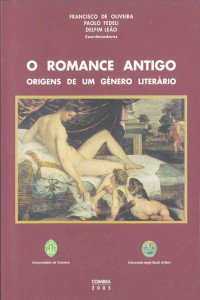Please use this identifier to cite or link to this item:
https://hdl.handle.net/10316.2/39256| DC Field | Value | Language |
|---|---|---|
| dc.contributor.author | Ruas, Vítor | |
| dc.date.accessioned | 2016-08-02T16:37:18Z | |
| dc.date.accessioned | 2020-09-08T18:14:54Z | - |
| dc.date.available | 2016-08-02T16:37:18Z | |
| dc.date.available | 2020-09-08T18:14:54Z | - |
| dc.date.issued | 2005 | - |
| dc.identifier.isbn | 972-9057-21-4 | |
| dc.identifier.isbn | 978-989-26-1229-4 (PDF) | |
| dc.identifier.uri | https://hdl.handle.net/10316.2/39256 | - |
| dc.description.abstract | Ethopoeia is one of the most important rhetorical devices in the Byzantine novel of the twelfth century. Sixty to seventy per cent of this literary production consists of direct speech, either under the form of monologue or dialogue. And, particularly, Eumathios Makrembolites’ novel, which is told in the first person, becomes lato sensu a long ethopoeia. The main models for the use of this rhetorical device are the Progymnasmata of the Second Sophistic, the handbooks for training textual composition. In the Progymnasmata, Hermogenes and Aphtonios define ethopoeia as the rhetorical device which is responsible for expressing a person’s character as he or she makes a speech. When inserted in the novel, ethopoeia assures a literary duration and gives the text a narrative function. The disposition of the ethopoeia plays thus a geotextual role, since it obeys to narrative criteria which are made to meet the expectations of the reading or hearing public. The immediacy created by the quotation gives the narrative sequence a dramatic nature. And, finally, it plays an important role in the general process of characterisation. | eng |
| dc.language.iso | por | - |
| dc.publisher | Centro de Estudos Clássicos e Humanísticos | por |
| dc.relation.ispartof | http://hdl.handle.net/10316.2/39242 | por |
| dc.rights | open access | - |
| dc.title | Ethopoeia no romance bizantino do século XII | por |
| dc.type | bookPart | por |
| uc.publication.firstPage | 185 | - |
| uc.publication.lastPage | 200 | - |
| uc.publication.location | Coimbra | por |
| dc.identifier.doi | 10.14195/978-989-26-1229-4_14 | - |
| uc.publication.digCollection | PB | por |
| uc.publication.orderno | 14 | - |
| uc.publication.area | Artes e Humanidades | por |
| uc.publication.bookTitle | O romance antigo: origens de um género literário | - |
| uc.publication.manifest | https://dl.uc.pt/json/iiif/10316.2/39256/205979/manifest?manifest=/json/iiif/10316.2/39256/205979/manifest | - |
| uc.publication.thumbnail | https://dl.uc.pt/retrieve/11090836 | - |
| uc.publication.parentItemId | 54632 | - |
| uc.itemId | 69210 | - |
| item.fulltext | With Fulltext | - |
| item.grantfulltext | open | - |
| Appears in Collections: | O romance antigo: origens de um género literário | |
Files in This Item:
| File | Description | Size | Format | |
|---|---|---|---|---|
| ethopoeia_no_romance_bizantino_do_seculo_xii.pdf | 13.69 MB | Adobe PDF |  |
Items in DSpace are protected by copyright, with all rights reserved, unless otherwise indicated.
